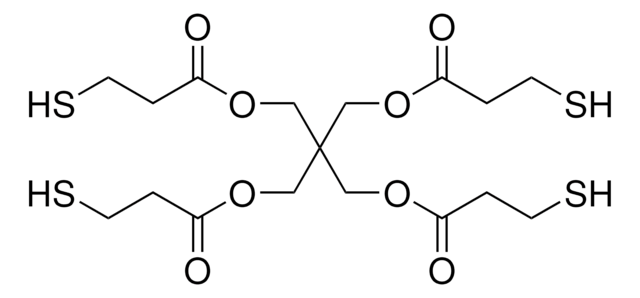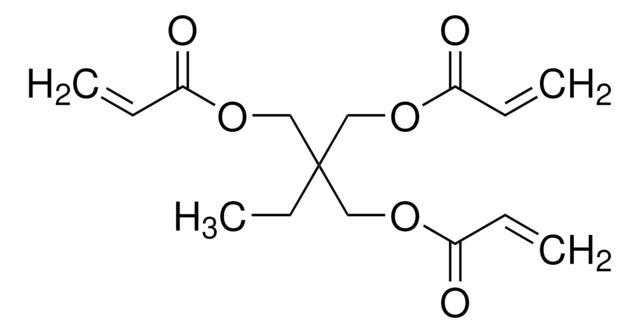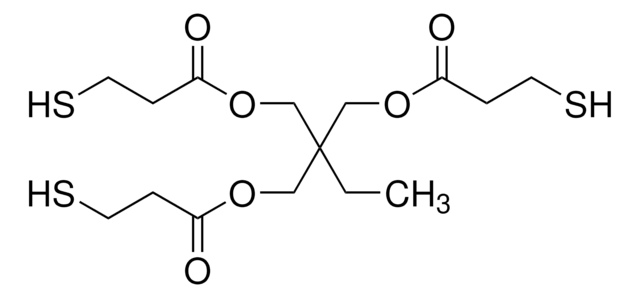196118
2,2-Dimethoxy-2-phenylacetophenone
99%
Sinónimos:
α,α-Dimethoxy-α-phenylacetophenone, Benzil α,α-dimethyl acetal
About This Item
Productos recomendados
Nivel de calidad
Análisis
99%
mp
67-70 °C (lit.)
cadena SMILES
COC(OC)(C(=O)c1ccccc1)c2ccccc2
InChI
1S/C16H16O3/c1-18-16(19-2,14-11-7-4-8-12-14)15(17)13-9-5-3-6-10-13/h3-12H,1-2H3
Clave InChI
KWVGIHKZDCUPEU-UHFFFAOYSA-N
Información sobre el gen
human ... ACHE(43) , BCHE(590) , CES1(1066)
¿Está buscando productos similares? Visita Guía de comparación de productos
Categorías relacionadas
Aplicación
- For the photopolymerization of methacrylate monomers in thick sections(~2mm).
- In the preparation of UV-curing silicone rubber with excellent mechanical properties and thermal stability via thiol-ene reaction.
Palabra de señalización
Warning
Frases de peligro
Consejos de prudencia
Clasificaciones de peligro
Acute Tox. 4 Oral - Aquatic Chronic 3 - STOT RE 2
Órganos de actuación
oral cavity
Código de clase de almacenamiento
11 - Combustible Solids
Clase de riesgo para el agua (WGK)
WGK 2
Punto de inflamabilidad (°F)
Not applicable
Punto de inflamabilidad (°C)
Not applicable
Equipo de protección personal
dust mask type N95 (US), Eyeshields, Faceshields, Gloves
Elija entre una de las versiones más recientes:
¿Ya tiene este producto?
Encuentre la documentación para los productos que ha comprado recientemente en la Biblioteca de documentos.
Los clientes también vieron
Artículos
The Progress in Development of Dental Restorative Materials
Nuestro equipo de científicos tiene experiencia en todas las áreas de investigación: Ciencias de la vida, Ciencia de los materiales, Síntesis química, Cromatografía, Analítica y muchas otras.
Póngase en contacto con el Servicio técnico














